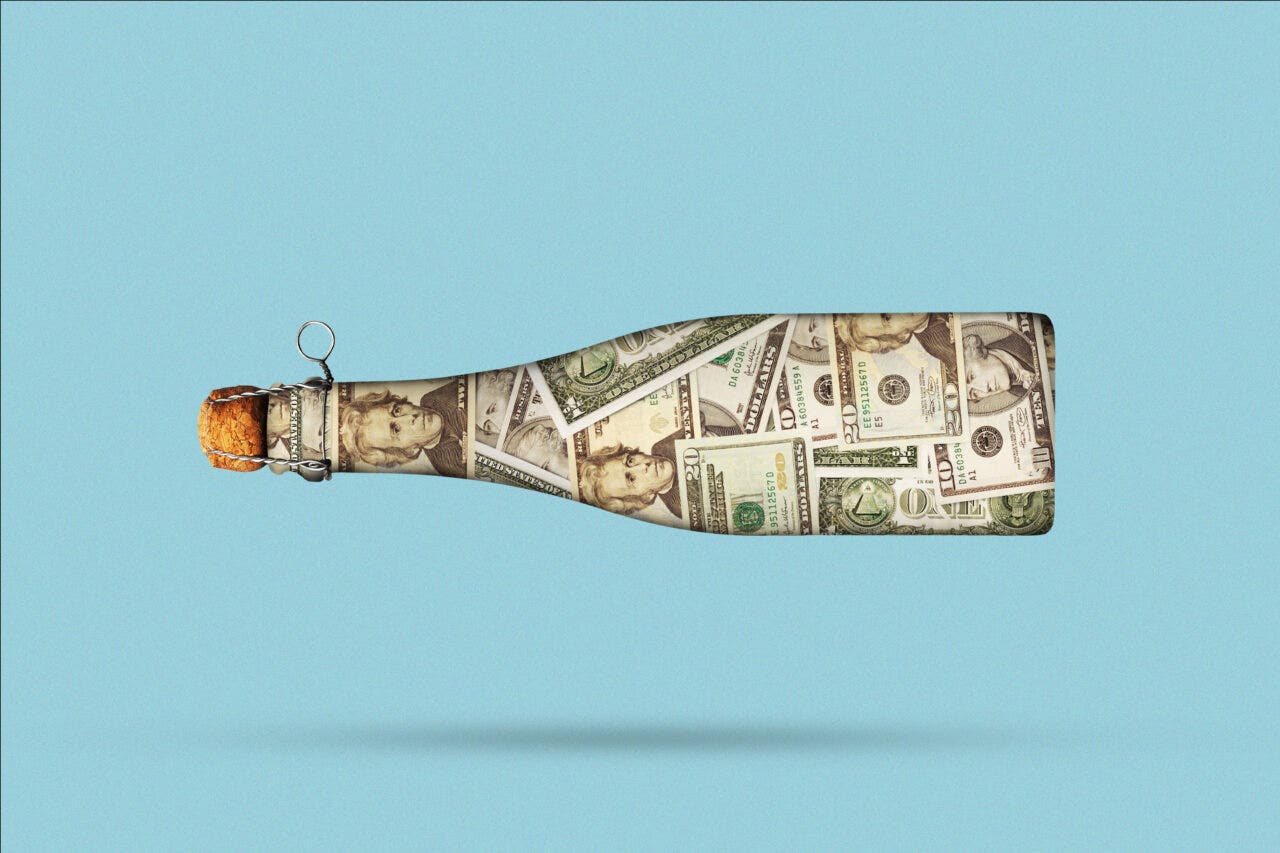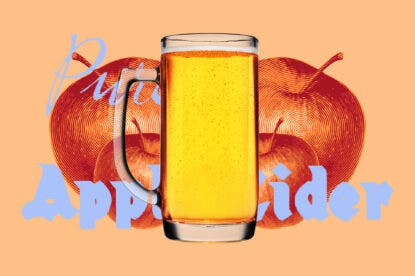“My whole life is wrapped up in my farm,” says Dan Rinke, co-owner, cidermaker and winemaker at Art+Science in Sheridan, Oregon. “It’s just my wife and I. We’re the only two employees working our 50-acre farm. I don’t want to lose it to a stupid tax.”
Rinke is referring to the “Champagne” or “bubble” tax, which kicks hard cider or perry (pear cider) into higher tax brackets if additional fruits outside of apples or pears are added and as the carbonation level increases. These very common and popular co-ferments, as they’re called, can result in producers having to pay roughly 12 times more per gallon than is required for standard apple- or pear-only cider. These major financial constraints don’t just impact cider and perry makers—they apply to mead and winemakers, too.
“This tax has controlled the beverage industry for years,” says Rinke, who makes ciders, wines, perries and co-fermented fruit wines with wife Kim Hamblin.
But these arbitrary brackets, based on fruit and carbonation, may soon change thanks to the bipartisan Bubble Tax Modernization Act (H.R. 7029), introduced to the House of Representatives on January 18. The bill would remove the differentiation between various lower-alcohol, fruit-based sparkling beverages outlined in the current law by allowing them the same carbonation levels afforded to hard apple and pear ciders—without charging producers higher tax rates.
The proposed change comes at a critical time for the U.S. cider industry. Large and small producers are under increasing pressure from breweries that are exploring fruit-flavored beers and malt beverages. In fact, the global fruit beer market raked in an estimated $266.9 billion in 2022; it’s expected to hit $379.5 billion in 2028. In spite of their bubbles, neither beer nor malt beverages are subject to the tax.
From Cider to Still Wine to Sparkling
Currently, the law separates cider, still wine and sparkling wine into three separate categories, each taxed at a higher rate than the last. Several factors—including ingredients and effervescence—can move a cider into either the still wine or sparkling wine categories, which substantially changes the rate at which it’s taxed.
Here’s how it works: A beverage falls under the cider category if it contains only apples or pears; has less than or equal to .64 grams of carbon dioxide per 100 milliliters (the level standard in a pint of beer); and is less than 8.5% alcohol-by-volume (abv).
These beverages, which encompass standard hard ciders and perries, are taxed at a modest $.23 per gallon. However, there are “multiple triggers that put it into the wine tax class,” says Michelle McGrath, CEO of the American Cider Association (ACA), which is far costlier for producers.
If those apples are co-fermented or back-sweetened with additional fruit like grapes, blackberries or raspberries, it gets classified as still wine. This is a problem for producers for a number of reasons. The tax rate for still wine is substantially higher—more than four times that of cider—at $1.07 per gallon.
You May Also Like: Cider Needs Its Own Identity. Single-Varietal Bottles Can Help.
Things get even trickier when carbonation comes into the equation. Consumers have come to anticipate a level of effervescence similar to that of beer or standard commercial ciders, and co-ferments and fruit-sweetened ciders often aren’t bubbly enough for their tastes. However, producers are wary of adding additional carbonation, which would flip their products into the higher-taxed sparkling wine category.
At least once a month, Dave Takush, head cidermaker at 2 Towns Ciderhouse in Corvallis, Oregon, gets an email from a customer saying that his co-ferments taste flat. He has to explain that these bottles were intentionally made that way, as he can’t afford to add the carbonation they want.
McGrath often hears the same. “Producers are pretty tired of hearing complaints from consumers about their fruit ciders tasting flat, because the wine tax bracket has a low carbon threshold,” she says. Artificially carbonated beverages get taxed at $3.30 per gallon and those that undergo bottle fermentation (i.e. naturally sparkling) are taxed at $3.40 per gallon—costing producers roughly 12 times as much to make.
In practical terms, 100 gallons of what’s considered cider will cost $22 in federal taxes. However, should a very similar co-ferment fall into the naturally sparkling category, that same product will cost $340. That’s all before state or other taxes.
Beer, on the other hand, is taxed in a completely different manner and brewers can incorporate as much mango, strawberry or other fruit they want without worrying about reducing carbonation levels or paying additional taxes.
Bring Forth Fruit
Given the far higher tax rates, one would think that cideries would prefer to stick to straight apples or pears. But co-ferments have been flying off the shelves. In 2023, 41% of cider sales were co-ferments with fruits like blackberry and cherry, according to Nielson data. “Fruit ciders are quite a popular segment of the cider industry,” says Takush. “If you have a taproom or you’re trying to get on the shelf at a bottle shop or into larger chains, you have to have fruited cider because it’s something people want.”
If this bill can make it through the House and Senate, sales will likely increase even further. All fruited ciders, fruited meads and other co-ferments will be legally allowed to boast the same level of carbonation of its apple- and pear-only brethren (and beer)—as long as they are under 8.5% abv—without moving up into the sparkling wine tax bracket. “The important thing to understand is this isn’t a tax break,” says Takush. “Very few people make carbonated fruit wines because they can’t afford it.”
You May Also Like: How Hard Cider Is Made
As it stands now, many producers curtail what they make in order to stay within the lower tax brackets.
Lyndon Smith, farmer, COO, and founding partner of Botanist and Barrel in Cedar Grove, North Carolina, is one of those producers. He aims to highlight Southern fruits like Muscadine grapes, pawpaws and certain heirloom apples in his pétillant naturel (pet-nat) ciders. Yet he finds himself constantly having to make tough decisions about what he can or can’t make. “It’s a real shame that the tax has to be part of our thought process,” says Smith.
McGrath echoes this sentiment. She points to the farm-based cider makers who are attempting to showcase the fruit they grow while diversifying their revenue streams. “But if they’re getting pinged with the carbonation tax, then it makes it less appealing for a small farmer,” she says.
Consumers Are Paying the Price
This bubble tax also financially impacts cider-loving consumers, as these added production costs are reflected in the purchase price. “I am still going to make the cider I want, regardless of the tax,” says Steve Selin, owner and cidermaker at South Hill Cider in New York’s Finger Lakes region. “But if I have to pay the Champagne tax, I should charge consumers $1 or $2 more per bottle.”
Because production costs are already higher for small cider makers than they are for their larger counterparts, these increasingly popular fruited ciders and co-ferments already tend to be more expensive for consumers. When the bubble tax gets thrown into the equation, producers need to charge even more to cover their costs—and these higher price tags may go beyond what the average consumer is willing to pay.
This is why producers are hoping the bill will pass by the end of the year—in spite of a slow-moving Congress. The goal, they say, is to bolster producers while giving consumers what they want at a price they can afford.
“Innovation and creativity are hallmarks of American producers,” says Takush. “It started with the craft beer revolution, and now that same spirit has spread to cider and winemakers. And right now, that carbonation tax is hindering innovation.”
Published: February 7, 2024















